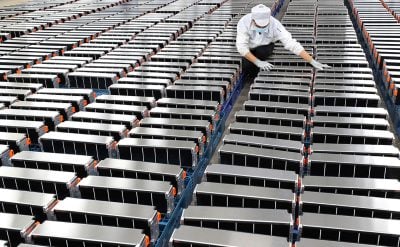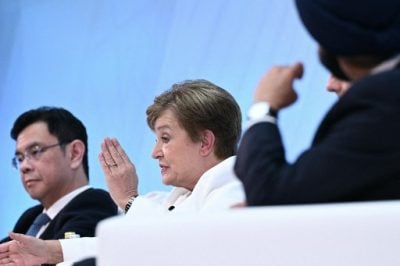As Kenya and Tanzania compete to capture East Africa’s inland trade, rail links from their main ports are playing an increasingly important role, as Tom Collins reports.
On an evening in late March, President Yoweri Museveni of Uganda, sporting one of his trademark wide-brimmed hats, stepped off the Madaraka Express train in Nairobi, the first foreign president to travel on Kenya’s standard gauge railway (SGR).
He made the journey from the Indian Ocean port of Mombasa in four hours – six hours less than it would have taken on the old metre-gauge railway dating from colonial times.
The SGR had been a central issue in the trade talks that Museveni had participated in with Kenya’s President Uhuru Kenyatta in Mombasa.
The railway is a flagship infrastructure project for Kenya, but is subject to increasing concerns about its mounting debt and commercial viability. Kenyatta had been keen to get Museveni to recommit to constructing his own country’s SGR as part of the “northern corridor” railway system, which envisages the railway extending through Uganda as far as Kigali in Rwanda.
In doing so he hoped to ward off the challenge from a rival project in Tanzania and help convince Chinese backers to fund the next stage of Kenya’s SGR, which currently ends at Naivasha, 350km from the Uganda border.
Museveni returned to Kampala with a presidential gift like no other: land in Naivasha, where Uganda can build a dry port to house incoming goods from Mombasa. With nothing offered in return except fleeting verbal assurances from Museveni, Kenyatta was playing a risky game. And, much to his dismay, in April the Kenyan president failed to secure the $3.68bn loan from the Chinese that was needed to extend the SGR to the Ugandan border.
Kenya has benefited greatly from Chinese largesse; Beijing has doled out $666mn in financial support for Kenya’s plan to build a high-tech city on the outskirts of Nairobi. Yet the reluctance of Chinese lenders to back the SGR reveals widespread skepticism towards the project’s future profitability as doubts persist that Uganda will continue construction of the SGR on the other side of the border. Having stopped short in Naivasha, the SGR posted $100m in losses last year with operations costing up to $10m a month.
Uganda is therefore central to Kenyatta’s SGR ambitions, as the commercial viability of Kenya’s overland line depends on its ability to attract trade from the East African hinterland including Uganda, Rwanda, eastern DRC and South Sudan. Despite Kenyatta’s charm offensive, analysts believe Museveni may still be hesitant to play ball.
Uganda has its own interests
“If you look at Uganda’s economic muscle, I don’t think it has the money to invest in the SGR,” says Chris Kayumba, senior lecturer at the University of Rwanda.
“President Museveni is counting on oil money but oil money has not come. The Naivasha land is like a bribe to invest in the railway line from Mombasa, but Uganda has already started investing in the oil pipeline to Dar es Salaam and I don’t think the bribe will make Museveni divert his money.”
Along with its investment in the pipeline through Tanzania, Uganda has instead turned its attention to reviving the much cheaper metre-gauge railway network to the Kenyan border – all the while dragging its feet over the SGR by saying Kenya must complete its final phase first.
Kwame Owino, CEO of the Nairobi-based Institute of Economic Affairs, a think-tank, argues Uganda has its “own interests” to consider and Kenya’s project – which is one of the most expensive lines in the world per kilometre at a total cost of $3.8bn – is not a priority.
“Uganda has to make its own decisions around what is considered cost effective,” he says. “So when it came out that Kenya’s SGR was comparatively very expensive Uganda naturally and correctly decided that it needed to explore other options.”
With China refusing Uganda’s $2.3bn loan request a year earlier at the third China-Africa gathering in Beijing – and with oil proceeds a distant reality – Museveni looks unlikely to invest in the northern corridor anytime soon, leaving Kenya out in the cold with its funding in disarray.
Adding to Nairobi’s woes, the “coalition of the willing” between Rwanda, Uganda and Kenya that was expected to complete the northern corridor has taken another hit as Kigali and Kampala witness a breakdown in relations.
Rwanda’s President Paul Kagame was initially a key backer of the Mombasa route, seeing a chance to drive his country’s goods from Kigali to Kampala through to Naivasha and finally to the Indian Ocean.
Since 2017, however, Uganda and Rwanda have been at loggerheads, with each suspecting the other of trying to undermine them.
That has led Kigali to reorient its goods exports elsewhere. With Rwanda reluctant to export its goods northwards, and Uganda flip-flopping on its commitment due to monetary concerns, the northern corridor has lost two of its most essential partners.
Magufuli smells opportunity
While Kenya’s project remains constrained by a lack of funding and regional political will, Tanzania’s Magufuli is making a bid to capture East Africa’s inland trade and drive it through the port of Dar es Salaam – in direct competition with Mombasa just 500km up the coast.
His plan has received a considerable boost, with Tanzania capitalising on Rwanda’s fallout with Uganda as Kigali seeks to reroute its goods eastward towards Dar es Salaam through what is known as the “southern corridor”.
Africa’s first bullet train rail line, at a cost of $1.3bn to Tanzania and $1.2bn to Rwanda, is being planned from the western Tanzanian town of Isaka to the Rwandan capital Kigali, with completion expected in 2022.
This line will complement some 400km currently being laid between Dar es Salaam and the Tanzanian capital of Dodoma by Turkish and Portuguese contractors.
Magufuli and Kagame met in January and instructed their ministries to expedite cooperation. Tanzania is currently searching for loans to support its share of the project, while Rwanda intends to finance the bullet train through a public-private partnership.
Bid for hegemony
The University of Rwanda’s Kayumba believes this partnership is part of Tanzania’s broader bid for economic hegemony in the region as it seeks to promote its port as the principal destination for huge markets in East Africa’s hinterland.
“I think that Magufuli is exploiting the differences between Rwanda, Uganda and Kenya to give incentives for Rwanda and Uganda to invest in the southern corridor over the northern corridor,” he says.
“Broadly, this is part of the struggle for economic supremacy between Kenyan and Tanzania which is unfolding in the region.”
Want to continue reading? Subscribe today.
You've read all your free articles for this month! Subscribe now to enjoy full access to our content.
Digital Monthly
£8.00 / month
Receive full unlimited access to our articles, opinions, podcasts and more.
Digital Yearly
£70.00 / year
Our best value offer - save £26 and gain access to all of our digital content for an entire year!
 Sign in with Google
Sign in with Google 



